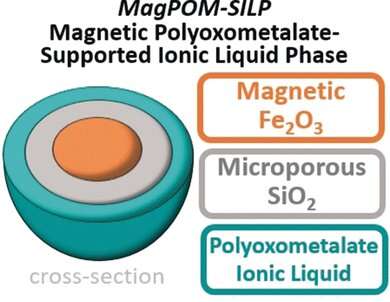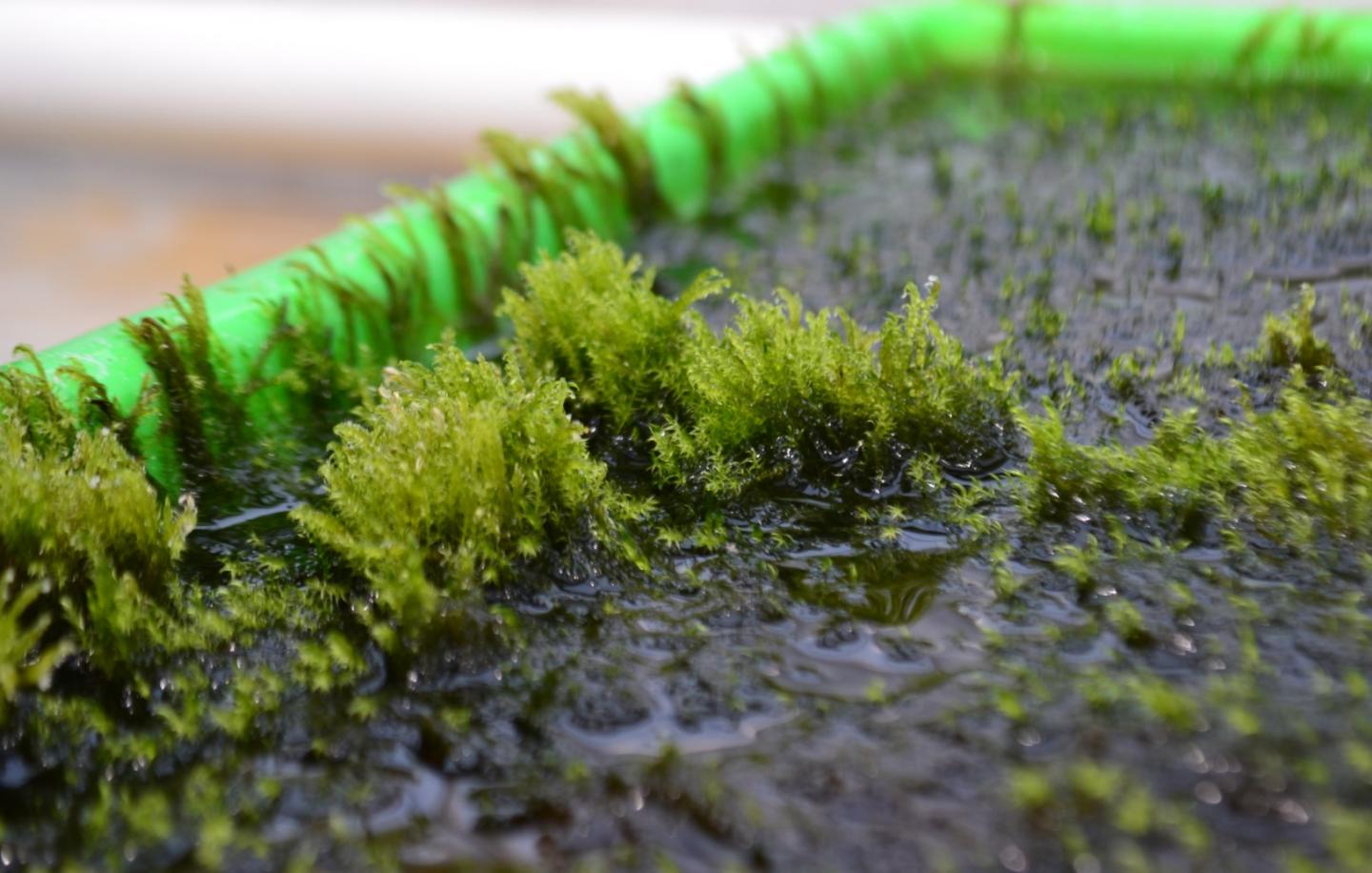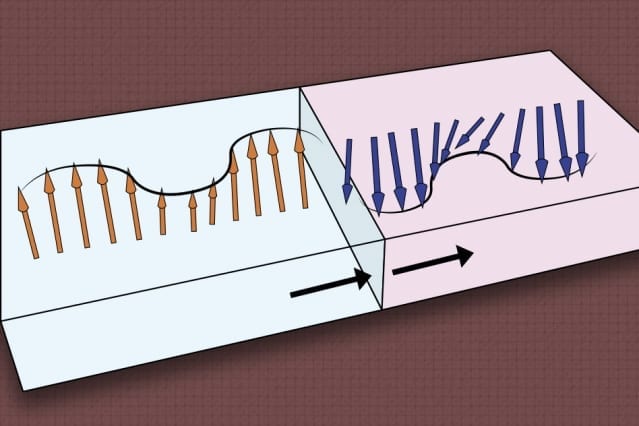
Magnetic nanoparticles with ionic liquids for water purification
In many parts of the world, access to clean drinking water is far from certain. Filtration of large volumes of water, however, is slow and impractical. In the journal Angewandte Chemie, scientists have introduced a new water purification method based on magnetic nanoparticles coated with a so-called “ionic liquid” that simultaneously remove organic, inorganic, and microbial contaminants, as well as microplastics. The nanoparticles are then easily removed with magnets.
Led by Carsten Streb, Robert Güttel, and Scott G. Mitchell, researchers from the University of Ulm, the Helmholtz Institute in Ulm (Germany), and CISC-Universidad de Zaragoza (Spain) developed an alternative approach around nanoparticles with a core of magnetic iron oxide and a shell of porous silicon dioxide. The surfaces of the nanoparticles were coated with a layer of an ionic liquid. An ionic liquid is a salt that is in its molten state at room temperature, making it a liquid without use of a solvent. The ionic liquid used by the researchers is based on polyoxometallates (POMs) — metal atoms bound into a three-dimensional network by oxygen atoms. In this case the metal of choice was tungsten because the polyoxotungstate anions can bind to heavy metals. As counterions, the researchers used bulky tetraalkylammonium cations with antimicrobial properties. The resulting ionic liquids form stable thin layers (supported ionic liquid phases) on the porous silicon dioxide surface of the nanoparticles. Once loaded with contaminants, the nanoparticles can simply be extracted from water with magnets.
In laboratory tests, the nanoparticles reliably removed lead, nickel, copper, chromium, and cobalt ions, as well as a dye called Patent Blue V as a model for organic impurities. The growth of various bacteria was also effectively stopped. In addition, the nanoparticles attached themselves to the surface of polystyrene spheres with diameters ranging from 1 to 10 ?m — a model for microplastics — which could then be quantitatively removed.
Adjustment of the components of the nanoparticles should allow for further optimization of their properties, making the magnetic nanoparticles a highly promising starting point for both central and decentralized water purification systems. This would allow for easy purification of large amounts of water, even without extensive infrastructure.
Learn more: Providing Safe, Clean Water
Go deeper with Bing News on:
Water purification
- West Point Treatment Plant water quality permit now issued
We've now issued the final permit for the West Point wastewater treatment plant in Seattle. It strengthens protective measures for Puget Sound with updates that match current water quality rules.
- Haltom City Residents Warned of Fake Water Filtration Flyers by Local Authorities
Haltom City residents are warned about scammers distributing fake flyers for water filtration systems and seeking personal information.
- Researchers achieve electrosynthesis via superwetting organic-solid-water interfaces
Chinese scientists have recently achieved the direct synthesis of high-purity benzaldehyde chemicals from the selective electrooxidation of benzyl alcohol. The organic-solid-water (OSW) three-phase ...
- Leyte town receives water filtration technology
San Miguel town in Leyte province recently received assistance from Aqua-Aid, an organization dedicated to addressing water purity issues. The aid included a water filtration device, LifeStraw ...
- Ellsworth secures $7M for crucial water treatment overhaul
The Village of Ellsworth is eligible to receive a $2,081,000 loan and $5,528,000 grant to construct a wastewater collection and treatment system.
Go deeper with Google Headlines on:
Water purification
[google_news title=”” keyword=”water purification” num_posts=”5″ blurb_length=”0″ show_thumb=”left”]
Go deeper with Bing News on:
Magnetic nanoparticles
- Scientists Raise Alarm Over New Invisible Indoor Air Pollution
Engineered specks of metal in consumer cleaning products might be contributing to a new form of indoor air pollution, scientists warn. Children may be particularly at risk even after the spray has ...
- Asteroid Ryugu holds secrets of our solar system's past, present and future
"The signatures of space weathering we have detected directly will give us a better understanding of some of the phenomena occurring in the solar system." ...
- Activity in a room stirs up nanoparticles left over from consumer sprays, study shows
Common household products containing nanoparticles—grains of engineered material so miniscule they are invisible to the eye—could be contributing to a new form of indoor air pollution, according to a ...
- Activity in a Room Stirs up Nanoparticles Left Over From Consumer Sprays
Common household products containing nanoparticles – grains of engineered material so miniscule they are invisible to the eye – could be contributing to a new form of indoor air pollution, according ...
- Pieces of distant asteroid show ‘bombardment’ that happens to objects in space
Pieces of distant asteroid show ‘bombardment’ that happens to objects in space - Samples come from Hayabusa-2, a Japanese spacecraft that landed on Ryugu in 2018 ...
Go deeper with Google Headlines on:
Magnetic nanoparticles
[google_news title=”” keyword=”magnetic nanoparticles” num_posts=”5″ blurb_length=”0″ show_thumb=”left”]










